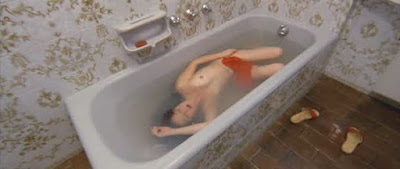Murder
Torso
**Ah, 1970s Italian films. There’s really nothing like them. I’m not nearly well versed enough in cinema history to know what it was that fuelled the explosion of fabulous Italian cinema in the late 60s and 70s but I’m glad it happened. From Spaghetti Westerns to supernatural slashers, a number of my favourite films, directors and film scores come from the era. **
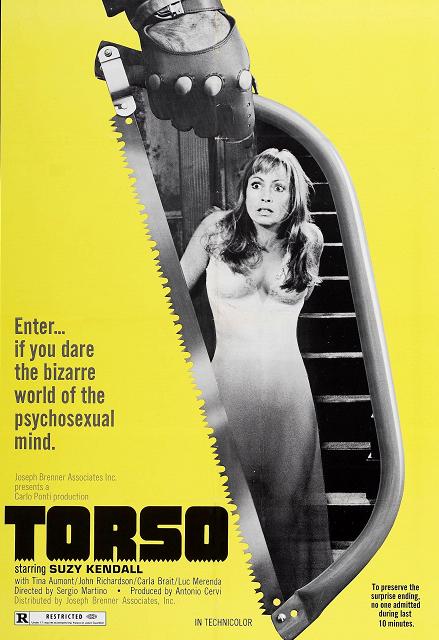
More often than not, these films get unfairly dismissed or overlooked. With large multi-lingual casts speaking whichever language came naturally to them and then being dubbed for release, cheap sets and often clumsy dialogue, a lot of modern film fans sadly mistake these for bad films. They’re not. With the exception of a few well-known greats - like Sergio Leone and Ennio Morricone - most of the star-players of Italian cinema seem to be restricted to only cult appreciation. It’s a shame because so many of these films are beautifully shot and scored, and ought to be better known.
Torso, today’s film, is a giallo flick from Sergio Martino. Like so many of the genre, a number of artsy, rich, female American students meet their end at the hands of a sadistic sexually driven killer (the Italian title translates as The Bodies Presented Traces of Carnal Violence…). Of course, the aim is to catch the killer but you can never really ignore the obvious glee the film takes in punishing these confident, promiscuous women. Besides the obvious sexism - which these films held in common with most other films of the era - the Italian cinema cycles are so confusingly anti-American. Just as the Spaghetti Western took a classic American good-versus-bad narrative and turned most of the Americans into greedy, cold-blooded murderers, mercenaries and cowards, Giallo films are obsessed with Americans but brutal towards them too. Here, the Italian art professor registers his surprise that his student, “a product of American technology”, could possibly have real feelings for art. He suggests that perhaps her real reason for being in Perugia is to “buy the coliseum”. The irony of these films’ resistance to American capitalism being delivered side-by-side with English dubbed dialogue for sale to foreign markets is apparently lost on the film-makers…
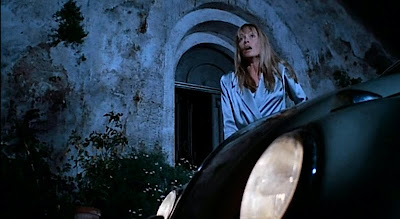
Anyway, in Torso we have a bunch of art students being picked of by a killer. It’s not really the plot or the mystery that holds the attention here so much as the tension and drama surrounding the murders. The first death, early in the story, is a masterpiece of suspense. A couple have sped off from class to a deserted spot to have sex in their bright-red mini (it is the 70s…). The camera lurks in the bushes, creeping around the car for a better view, making the viewer just as sleazy a voyeur as the masked man whose viewpoint we are seeing. Expendable Boyfriend #1 spots the masked man and charges out of the car and into the undergrowth in pursuit. We’re left alone with Flo in the car, the camera still lurching uneasily, as plucked strings warn of what’s to come. You know she’s going to die. But that’s not the point. Even though it’s predictable as can be, with plenty of the those moments where you just want to scream “NO, no, no, stay in the car!”, at the hapless soon-to-be-victim, the real art of the seen is in the buildup to the inevitable. The strings get more insistent. Someone in the orchestra has found a drum and begins gently tapping it. The camera lurches more awkwardly. We see a flash of leather gloves, a movement in the bushes, a peeping figure round the wall. Suddenly it’s all crescendo and murder.
Throughout, the score and cinematography are what really drive this film. Even in moments of calm the camera has a tendency to creep around obstacles in a disarming manner. As with more famous examples, such as Argento’s Proffondo Rosso / Deep Red, a certain amount of the mystery revolves around seeing: mistakes, confusion and half-glimpsed actions lead detectives and characters astray and the viewer becomes a part of the voyeurism that drives the story. The camera shoots from face to face, watching people watching. The score is similarly impressive: silence is used to good effect, and the absence of music is often as tension-building as the music itself. When the music does kick in, little recurring patterns foreshadow moments of violence and build towards violent, noisy bursts. Guido and Marizio de Angelis did a very good job here.
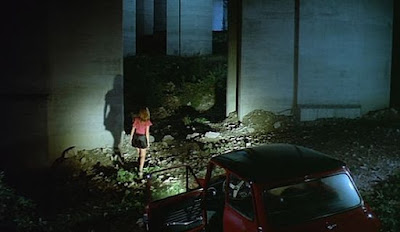
Torso is not the giallo I’d suggest for anyone’s first taste of the genre - probably some Argento would be as good a start as any - but it’s a decent film. However much the dialogue and plot may be somewhat clumsy, there’s a lot of style and tension in it that is all too often missing from modern films.
Cat O' Nine Tails
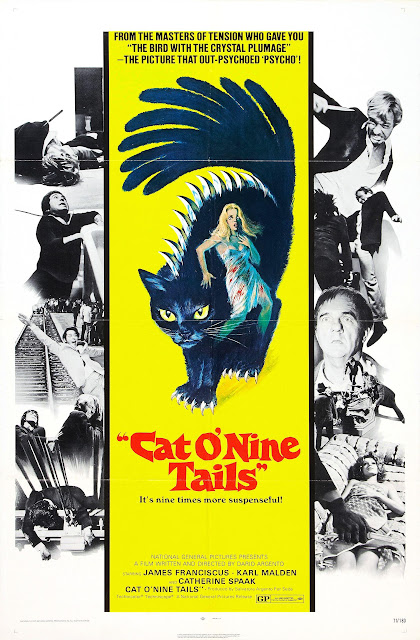
So here we are! Last night’s film, which was number 7 and brought my week of Argento films (before Suspiria tonight) to a close, was Cat O’ Nine Tails, another one that I hadn’t seen before. I was, I must say, pleasantly surprised. It falls, again, into the giallo camp more than the horror side - although they all show elements of both - and, being another very early film I must admit I didn’t expect as much fun as I got.
Several online reviews - especially those from Argento fans - are really quite negative about this film, describing it as a fairly ham-fisted follow up to Bird with the Crystal Plumage, but I couldn’t agree less. The story telling here was tight and interesting, the dialogue was er… no more clunky than we might expect and the characters and motivations were interesting.
Having watched it the day after watching Profondo Rosso, it was all too easy to see this as a blueprint for the later, more superior murder thriller; many of the aspects that were to become Argento staples are still in nascent form here. The camera is subjective and active but… not as intelligently so as in later films (some of the camera angles here seem less surprisingly wonderful and more just ‘different’), the music is absolutely instrumental (no pun intended…) in the creation of a dens atmosphere but never quite matches the iconic heights of later films - it definitely isn’t particularly memorable - the plot is full of red-herrings and hidden clues but the denouement is nowhere near as satisfying as later Argento, particularly Profondo Rosso.
It would be certainly true to call this one of the least “Argento-esque” Argento film but that’s not necessarily a bad point. I’d suggest that the film stands up pretty well on its own merits and, if the ending is perhaps a little rushed, is definitely an enjoyable watch. It’s a film that’s perhaps best recommended to those who aren’t as keen on the more flamboyantly visuals of the later films, or to those keen to see where those visuals came from. It’s certainly not perfect but it’s far from the weak slasher I had been lead to expect.
Phenomena
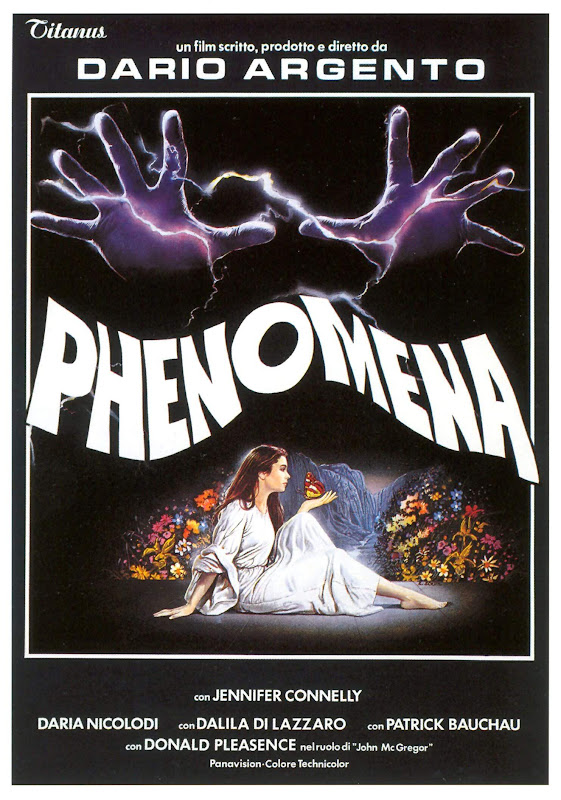
Another new (to me) Argento film, another next-day post. The problem this time, though, is that I still don’t know what to think. Phenomena has me confused; it could either be my least favourite Argento film yet or it could even be - whisper it- my favourite. I certainly will need to see it again beofre I’m sure.
It has all the faults you could accuse an Argento film of, and it has them by the bucketfull. The story is pretty much nonsensical. The dialogue is clumsy. The acting is as wooden as it gets. If I wanted (and several IMDB reviewers have wanted to) I could make this sound like a truly awful film. It’s about a half-mad girl who communicates with insects, for heaven’s sake!
So… it’s a bad film right?
Wrong.
Phenomena is, as with so many of these films, not really meant to be a narrative to follow, a dramatic performance to astound or a literary tour-de-force. It’s an experience. It’s a film you have to sit and give your full attention to. So surrender your art-critic pretensions and just immerse yourself in it. There’s a lot to like!
She does, after all, communciate with insects! This, predictably, does not mean talking to ladybirds but rather invokes biblical-plagues of flying terrors, ready to sting, nibble and smother anything in their way.
It also has Donald Pleasence (always a good thing) and a monkey.
And…
Welll…..
If I seem to be struggling to find useful things to say about this film it’s really only because it has such an absolutely brilliant, arresting, throat-grabbing, mind-boggling wonder of an ending. The film was good, sure, but the last quarter of an hour or so utterly trumped it. It’s not frightening as such (there’s certainly no scene to equal the dog-chases-girl in Tenebrae) but it is tense, it is shocking and it is delivered with enthusiasm and panache!
It would be such a shame to spoil it for anyone who hasn’t seen it, so I’ll carefully guard my tonguer (er… keys?) and leave you with a very unsatisfactorary conclusion. Phenomena is quite possibly utter rubbish with a chilling ending. Or it is quite possibly a stunning film that needs to be experienced. I’m just not sure.
Either way, I certainly need and want to watch it again.
Tenebrae (AKA Tenebre)
Tonight’s film was Tenebrae, the first one that was new to me. Sadly, I’m way too tired to write about it now, so it can wait until the morning.
For now, fans of Justice’s ‘Phantom Parts I & II’ should probably check out the Tenebrae theme tune, contributed by repeated-Argento-collaborators, Goblin.
Justice:
Goblin:
What Have You Done To Solange? / Cosa avete fatto a Solange?
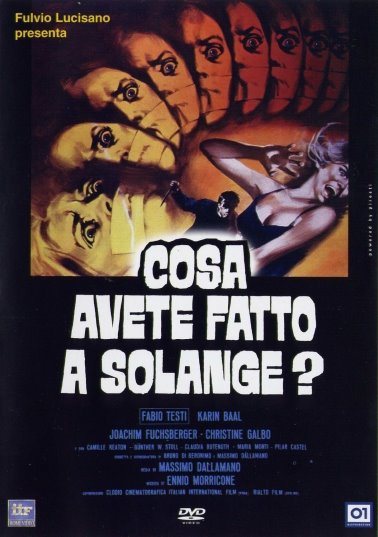
The Italian Giallo films are perhaps not best known for being the most sophisticated cinematic creations of all time. Characterised by murder, mystery and sex, they equate more or less with our idea of a thriller, pulp-fiction Euro-cine. But with more sex.
It came as a surprise then just how good What Have You Done To Solange? was. On paper, admittedly, it looks as smutty, crass and trashy as you could expect from a Giallo (or any low-budget offering from the trash-flick capital of Europe): it’s set in a Catholic girls school full of illicitly promiscuous teens, a teacher (the Italian professor, no less) is courting his pupils behind his wife’s back, girls are getting killed with knife-wounds in unpleasant places and an unknown girl -the Solange of the title- is the link…

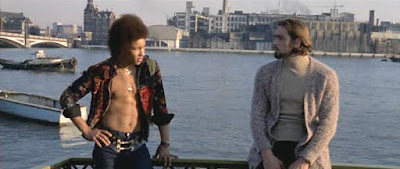
But that’s where I have to stop giving away the details. Because, as much as it may come as a surprise, What Have You Done To Solange? is actually a pretty good film. The mystery is surprising, the story is tense, well-paced, interesting. You actually WANT to know what’s going on.
Sure, the girls only seem to have conversations whilst taking communal showers, sex is entirely central to the plot: this is certainly no genre-defying masterpiece, but is entertaining and worth watching as a film. And not just softcore Italian trash…
An extra piece of trivia: the film is almost unnoticeably dubbed; the creators had intentions on the English-speaking markets, where dubbed films do poorly, and made everyone speak their lines in English, their strong accents were dubbed over, but their lip movements match the English.
As if all of that wasn’t enough to convince you, the film is soundtracked by the inimitable Mr Morricone…
